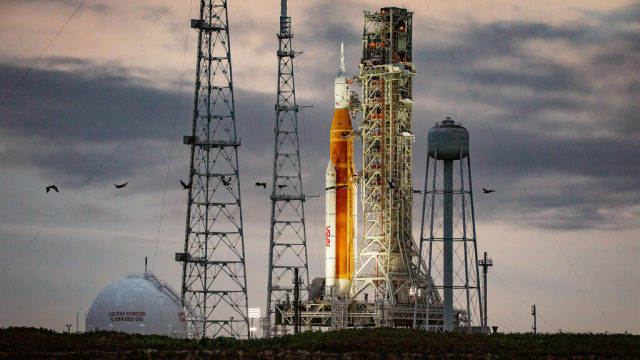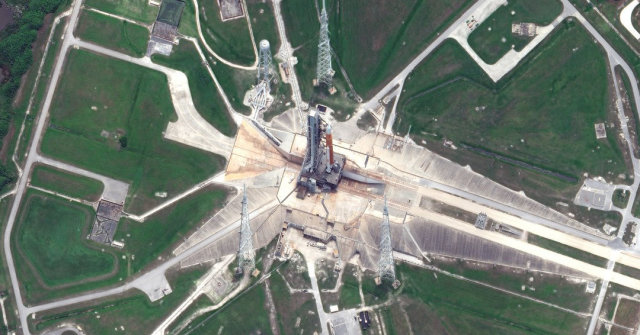This week, the long-suffering superheavy launch vehicle Space Launch System finally passed the dress rehearsal of the launch together with its payload — the Orion spacecraft. Almost. The countdown had to be stopped 20 seconds ahead of schedule due to another small malfunction. NASA recognized the event as a success, although they clarified that some goals could not be achieved. Now the agency has to decide whether it is possible to launch the first mission under the Artemis program as it is, or it will have to conduct another final test.
The day after the "wet" dress rehearsal (WDR, wet dress rehearsal, full cycle of pre-start countdown with refueling of tanks, but without ignition of engines) The US National Aeronautics and Space Administration (NASA) held a press conference online. According to the SpaceNews portal, quite curious and slightly strange statements were made at the event. In particular, the agency considers the key test of the launch vehicle to be successful. However, it cannot decide whether it can be started after that. It will take several more days for NASA to discuss the issue, after which either the launch date of the Artemis-1 mission will finally be announced, or the timing of another WDR.
The problem is again in insufficiently sealed lines for the transportation of cryogenic fuel components. This time, the pig was planted with a drainage pipeline for hydrogen, which diverts gas from the rocket after cooling the engines. One of the joints, apparently, has lost its tightness as a result of temperature deformations. The leak was discovered during the refueling of the first stage, and automation suspended the pre-launch preparation process. The engineers tried to fix the situation: the connection was heated, and then it was allowed to cool down again. It was assumed that this would allow the seals to shift slightly relative to each other and provide a better fit. Nevertheless, the procedure did not help.
After a comprehensive assessment of the problem, the engineers decided to "cheat" the automation and continue the rehearsal. The leak did not pose an immediate danger to the entire event, and the ignition of the engines was not intended by the test program. There was one unpleasant nuance: when the control of the entire process according to the schedule passes from the ground infrastructure to the electronics on board the rocket, it will immediately stop the countdown. But no one was going to change the program of the on—board computers - it just meant that it would not be possible to complete the WDR until the end.
And so it happened: at the T-29 seconds mark (29 seconds before the expected separation from the launch pad), when control over all key operations passed to the rocket itself, the countdown stopped. The SLS automation, as well as the ground infrastructure before that, noticed a leak in the drainage and forbade further procedures. Nevertheless, NASA specialists were able to perform most of the procedures within the framework of WDR, and they did not have any serious comments.

©Nathan Barker, NASASpaceFlight
According to Mike Sarafin, mission manager of the Artemis program, the tests achieved 90% of the intended goals. But as for specific outstanding tasks, he did not share details. Although from the point of view of flight readiness, the team believes that the necessary minimum of checks were carried out with a margin.
Despite such an encouraging conclusion, the launch has not yet been officially scheduled. While NASA is going to assess in detail whether there is an urgent need for a repeat (or rather, the third in a row) dress rehearsal. A final decision is expected either by the end of this week or early next.
It is worth noting that, given the incredible technical complexity of the SLS and its payload, such frequent delays are inevitable. Yes, from the outside it looks almost ridiculous, but for all the successful and not very successful tests, the largest American state rocket (since the Saturn V) shows itself well. We have never identified a single critical design flaw or breakdown that could jeopardize the mission.
Recall that, taking into account all the delays, the nearest launch window for the first SLS flight under the Artemis program has shifted to August 2022. At the start of the program in 2010, it was planned that the rocket would fly for the first time in six years. But this is far from the only problem with NASA's new lunar program. For example, spacesuits are still not ready for her — their development is years late, and with a billion dollars spent there is no result, and recently the agency decided to outsource the task.

